By Sam Rinko
AI security software provides businesses with advanced toolsets to combat the ever-persistent threat of cyberattack. From identifying suspicious patterns to proactive threat hunting, AI security solutions offer a proactive and intelligent defense mechanism against malicious attacks that goes beyond traditional cybersecurity solutions.
I evaluated leading AI security solutions to see how they compared on features, pricing, and use cases. Here are our picks for the best AI security tools for your business in 2025:
- SentinelOne: Best for Advanced Threat Hunting
- CrowdStrike: Best for Monitoring User Endpoint Behavior
- Vectra AI: Best for Hybrid Attack Detection and Response
- Darktrace: Best for Neutralizing Novel Threats
- Fortinet: Best for Preventing Zero-Day Threats
- Trellix: Best for Environments Requiring Constant Monitoring
Top AI Security Software
Overall, I picked SentinelOne as the top AI security software, ranking first for cost and tying for customer support and integrations. The chart below shows at a glance how all of the leading AI security tools compare on use case, complexity, and starting price, followed by detailed reviews of the systems.
| Best For | Complexity | Starting Price | |
|---|---|---|---|
| SentinelOne | Advanced threat-hunting and incident response capabilities | Low | $69.99 per endpoint |
| CrowdStrike | Monitoring user endpoint behavior | High | $59.99 per device |
| Vectra AI | Hybrid attack detection, investigation, and response | Moderate | Available upon request |
| Darktrace | Neutralizing novel threats | High | Available upon request |
| Fortinet | Preventing zero-day threats | High | Available upon request |
| Trellix | Complex IT environments that require continuous monitoring | High | Available upon request |
Continue reading to learn more about each platform’s use case, pricing, and key features, or skip ahead to see our scoring logic.
Featured Partners: Cybersecurity Software
TABLE OF CONTENTS

SentinelOne
Best for Advanced Threat Hunting
Overall Rating: 4.3/5
- Core Features: 4.1/5
- Cost: 3.7/5
- Customization: 4.9/5
- Integrations: 5/5
- Ease of Use: 4.3/5
- Customer Support: 5/5
SentinelOne’s Singularity platform is an AI-backed autonomous security platform that combines an endpoint protection platform (EPP), EDR, and extended detection and response (XDR) into a unified platform. This platform automatically tracks all operating system relationships, giving you full context and understanding of an attack. It also features an automated threat resolution with its patented one-click remediation, making it easier to reverse unauthorized changes.
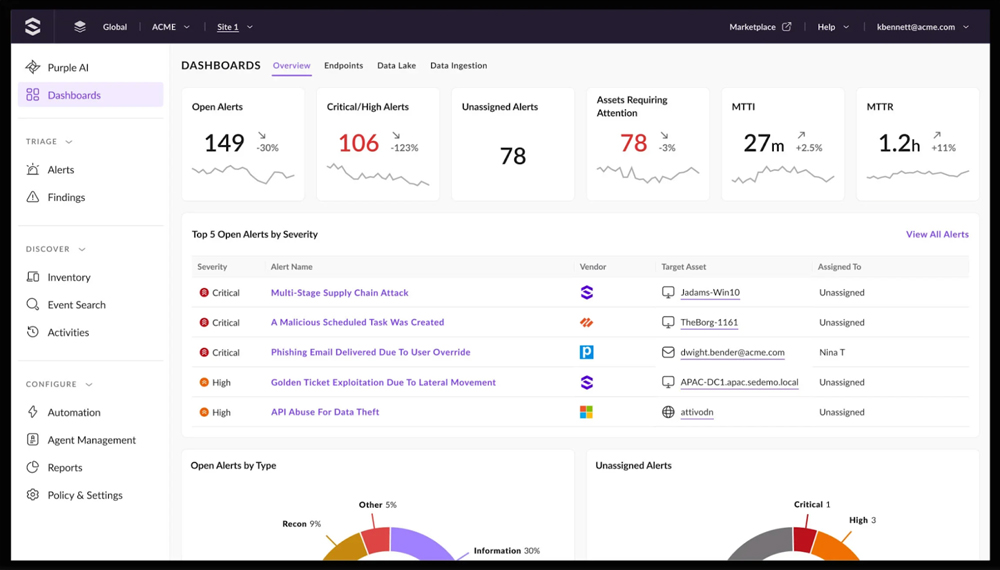
Product Design
The platform uses AI and ML algorithms to provide real-time prevention, detection, and threat hunting across user endpoints, containers, cloud workloads, and IoT devices. It protects against a wide array of advanced cyberthreats, including malware, ransomware, exploits, and fileless attacks. Additionally, SentinelOne’s interface offers a comprehensive security dashboard that shows key metrics, including alert tracking, threat detection, and response time measurements.
Why I Picked SentinelOne
What I found most noteworthy is the platform’s powerful automated incident response capabilities. These capabilities enable security teams to quickly stop and recover from security breaches and other attacks, mitigating the damage. For example, the tool will automatically trigger the correct incident response workflows if a threat is detected, which includes blocking suspect traffic or isolating attacked endpoints. The platform also aims to simplify and strengthen enterprise security operations by providing comprehensive and automated protection across the entire threat lifecycle.
Pros and Cons
| Pros | Cons |
|---|---|
| Provides quality threat-hunting tools and insights | Digital forensics and incident response only available to enterprise users |
| 24/7 by 365 threat hunting and managed services | Reporting capability could be better |
Pricing
- Singularity Core: $69.99 per endpoint, per year
- Singularity Control: $79.99 per endpoint, per year
- Singularity Complete: $159.99 per endpoint, per year
- Singularity Commercial: $209.99 per endpoint, per year
- Singularity Enterprise: Pricing available upon request
Features
- Ability to identify and triage threats
- Can ingest data from many sources
- Will identify and quickly launch threat detection and response
- Advanced threat-hunting capabilities
- Automated incident response workflows

CrowdStrike
Best for Monitoring User Endpoint Behavior
Overall Rating: 4.3/5
- Core Features: 4.6/5
- Cost: 3.3/5
- Customization: 5/5
- Integrations: 4.6/5
- Ease of Use: 3.9/5
- Customer Support: 5/5
CrowdStrike Falcon is an AI security solution that uses machine learning to stop breaches and automate threat intelligence, all delivered on a single platform. Its custom large language model works to protect endpoints, detect threats, and respond to security incidents in real time. Through AI-powered indicators of attack, script monitoring, and memory scanning capabilities, CrowdStrike’s endpoint protection platform prevents threats ranging from common malware to sophisticated zero-day exploits.
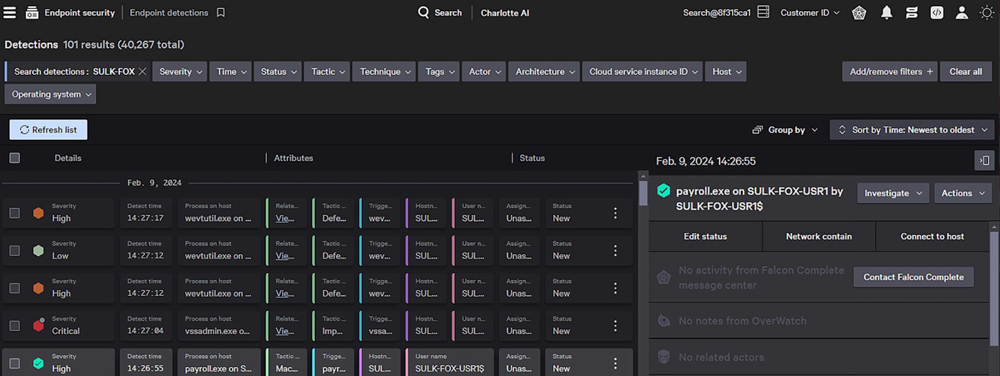
Product Design
CrowdStike is ideal for endpoint protection because it consolidates next-generation antivirus (AV) and endpoint detection and response (EDR). It also features a 24/7 managed threat-hunting service in a single lightweight agent, providing organizations with complete visibility and protection across their endpoints. CrowdStrike is best suited for mid-to-large enterprises that want a comprehensive solution that works across almost all areas of cybersecurity, with an emphasis on endpoint protection.
Why I Picked CrowdStrike
The lightweight agent continuously monitors and protects endpoints against various attacks using real-time indicators of attack and threat intelligence from across the enterprise, thereby providing proactive threat-hunting capabilities. CrowdStrike uses behavioral AI to detect anomalies in user endpoint behavior. This means it can monitor current activity and compare it against past user actions to protect the perimeter. Its models are trained on trillions of data points daily, allowing it to target threats ahead of time.
Pros and Cons
| Pros | Cons |
|---|---|
| Provides visibility across devices, accounts, and cloud workloads | User interface could be improved |
| AI-driven insights | Learning curve to get familiar with the platform’s capabilities |
Pricing
- Falcon Go: $59.99 per device, per year
- Falcon Pro: $99.99 per device, per year
- Falcon Enterprise: $184.99 per device, per year
- Falcon Elite: Custom pricing
- Falcon Complete MDR: Pricing available upon request
Features
- Unified attack surface visibility
- Pre- and post-incident response services
- Can import IOCs
- An AI-based detection system called user and entity behavior analytics

Vectra AI
Best for Hybrid Attack Detection and Response
Overall Rating: 4.1/5
- Core Features: 4.6/5
- Cost: 1.7/5
- Customization: 4.6/5
- Integrations: 5/5
- Ease of Use: 4.4/5
- Customer Support: 5/5
Vectra AI Attack Signal Intelligence platform combines human intelligence, data science, and machine learning to detect and respond to cyberattacks in real time. The company’s AI and cybersecurity solution gives you constant visibility into your network security posture, helping you prioritize potential threats and enabling quick response and mitigation to minimize the impact of hybrid cyberattacks, or two or more combined attacks designed to break the perimeter.
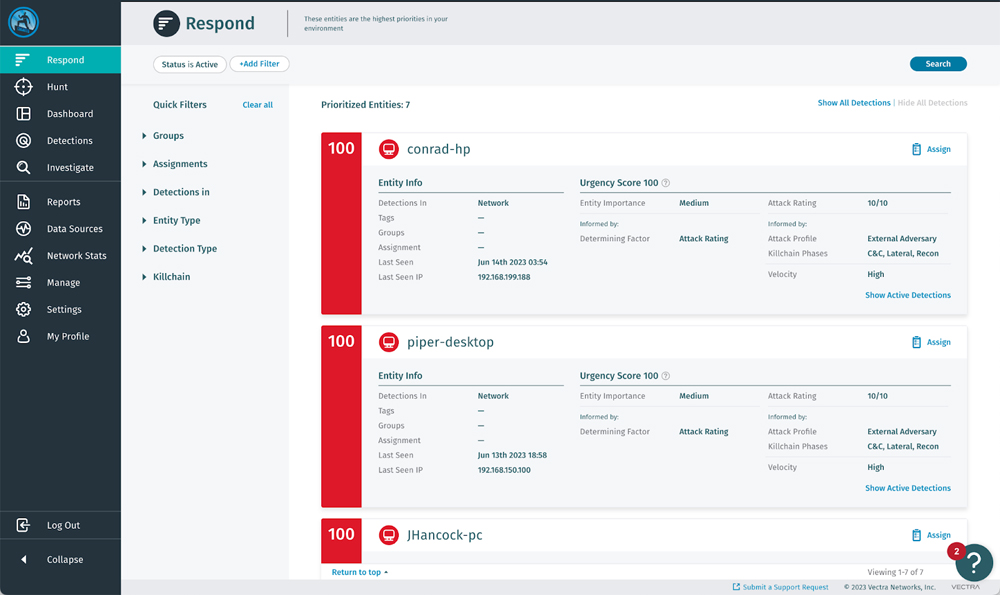
Product Design
Significantly, Vectra focuses on preventing hybrid attacks, which are on the rise. Using contextual insights, AI-driven detections, and third-party automated responses, the AI security software combats various hybrid attack types, such as account takeovers, data breaches, ransomware, supply chain attacks, and even nation-state attacks.
Why I Picked Vectra AI
A feature I found notable is how, unlike other tools, Vectra AI puts an emphasis on showing you which threats are most critical and then triaging irrelevant anomalies to reduce alert noise that inevitably wastes your team’s time. The platform automatically triggers the correct incident response workflows. Examples include blocking suspect traffic or isolating attacked endpoints.
Pros and Cons
| Pros | Cons |
|---|---|
| Attack prioritization | Reporting capability can be improved |
| AI-driven insights | Product documentation can be improved |
Pricing
Vectra AI doesn’t display product pricing on its website. Publicly available information shows pricing ranges as follows:
- Up to $5,000 for month-to-month licenses
- Up to $50,000 for annual licenses, depending on your selected service
For actual rates, contact Vectra’s sales team for a quote
Features
- Analyzes attacker behaviors post-compromise and in real time
- Correlates and ranks incidents by urgency across environments
- Threat intelligence integration
- AI-based threat detection and response geared for hybrid attack defense
- Machine learning techniques, along with deep learning and neural networks
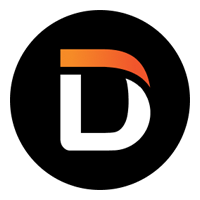
Darktrace
Best for Handling Novel Threats
Overall Rating: 4/5
- Core Features: 4.8/5
- Cost: 1.4/5
- Customization: 4.5/5
- Integrations: 5/5
- Ease of Use: 4/5
- Customer Support: 5/5
Darktrace’s cyber AI platform uses AI and machine learning algorithms to identify and respond to cyberthreats in real time. The AI security software offers a unified solution that protects the cloud, SaaS, email, IoT, ICS, remote endpoints, and the network. Predictive in its approach, Darktrace’s self-learning AI technology is designed to understand and adapt to the unique patterns of a company’s network by learning from users and devices as well as the connections between them, allowing it to detect anomalous, novel behavior that may indicate a cyberattack.
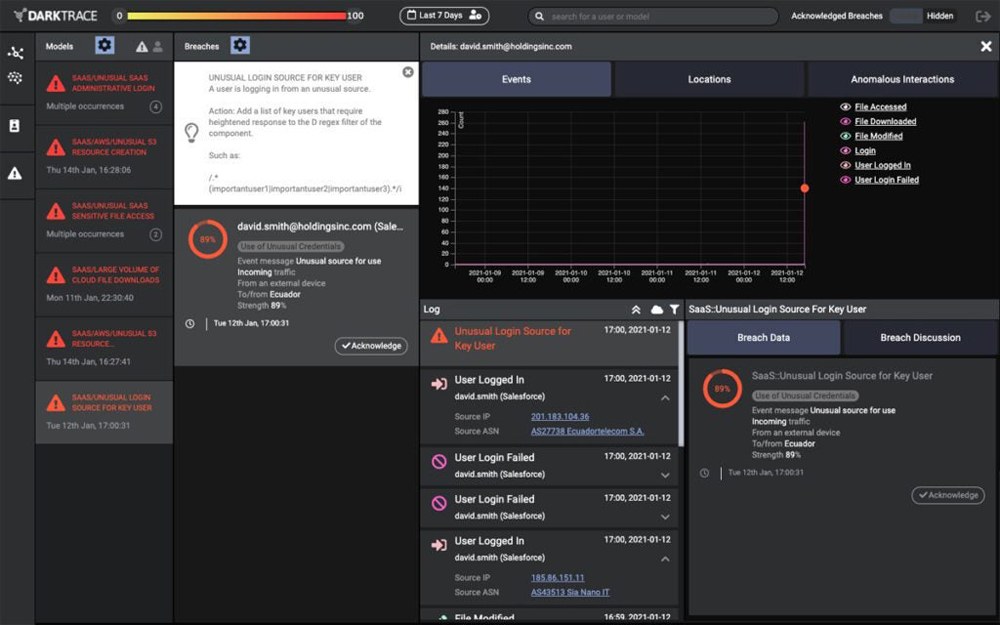
Product Design
Darktrace’s AI algorithms also constantly learn and adapt to the evolving threat landscape, enabling it to identify known and unknown threats and detect abnormal activity that may indicate the presence of previously unseen threats. To that end, Darktrace is geared to combat Living off the Land (LOTL) attacks, highly targeted attacks, and AI attacks.
Why I Picked Darktrace
In reviewing the tool, I was pleased to see that the platform offers a wide range of AI-supported services like AI-based attack simulation. This enables teams to prepare for and test out strategies against attacks in a real-world setting. I also liked how it offers a robust AI incident investigation and reporting feature to help you learn why attacks occurred and how to work to make sure they never happen again.
Pros and Cons
| Pros | Cons |
|---|---|
| Hardens defenses | Expensive, especially for small businesses |
| Provides instant attack visibility | Complex initial setup |
Pricing
Darktrace doesn’t advertise its product pricing on its website, but publicly available data cites the following pricing:
- Small Bandwidth: $30,000 for up to 300 Mbps of average bandwidth and 200 hosts
- Medium Bandwidth: $60,000 for up to 2 Gbps of average bandwidth and 1,000 hosts
- Large Bandwidth: $100,000 for up to 5 Gbps of average bandwidth and 10,000 hosts
Features
- Continuously monitors your attack surface for risks
- Offers instant visibility of threats
- Interrupts fast-moving attacks
- Restores your system to health after an attack

Fortinet
Best for Handling Novel Threats
Overall Rating: 4/5
- Core Features: 4.6/5
- Cost: 2.1/5
- Customization: 4.6/5
- Integrations: 4.1/5
- Ease of Use: 4/5
- Customer Support: 5/5
Fortinet FortiGuard is an AI security software incorporating threat intelligence, real-time threat analysis, and global threat protection to identify and block advanced threats and attacks. The services integrate with security solutions across Fortinet’s broad portfolio to provide security capabilities that protect applications, web traffic, content, devices, and users located anywhere.
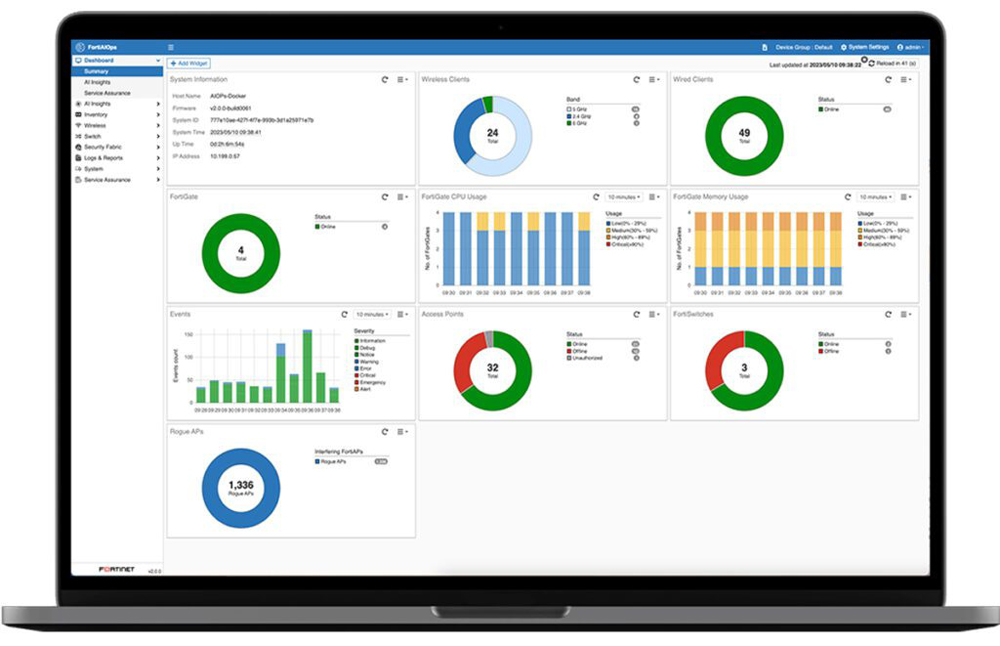
Product Design
In comparing Fortinet to other AI cybersecurity solutions, I found its key differentiator to be its ability to prevent zero-day threats. Always learning, the AI-based threat detection software is regularly updated with the latest threat intelligence from FortiGuard Labs experts, data from across Fortinet’s broad sensor base, and zero-day intelligence feeds. This ensures that organizations are protected against emerging threats and zero-day vulnerabilities.
Why I Picked Fortinet
FortiGuard’s service portfolio includes content security and NOC/SOC security. This is very important given the core nature of the Security Operations Center. It also offers SOC-as-a-service functionality and provides consistent cybersecurity assessments and readiness alerts.
Pros and Cons
| Pros | Cons |
|---|---|
| Protect against network- and file-based threats | Steep learning curve |
| Security profile customization | Customer support could be better |
Pricing
- Contact for a detailed quote
Features
- Guards against all OWASP Top-10 threats, DDoS attacks, and bot attacks
- Detects compromised systems
- AI-based inline malware prevention
- AI-powered SandBox engine
- Focuses on preventing zero-day threats

Trellix
Best for Environments that Require Continuous Monitoring
Overall Rating: 3.9/5
- Core Features: 4.7/5
- Cost: 1.1/5
- Customization: 4.6/5
- Integrations: 5/5
- Ease of Use: 4/5
- Customer Support: 5/5
Trellix is a result of the merger of the security product divisions of McAfee Enterprise and FireEye. This AI security software excels in continuous monitoring, which enables proactive threat detection by combining signature-based identification, behavioral analytics, and real-time monitoring.
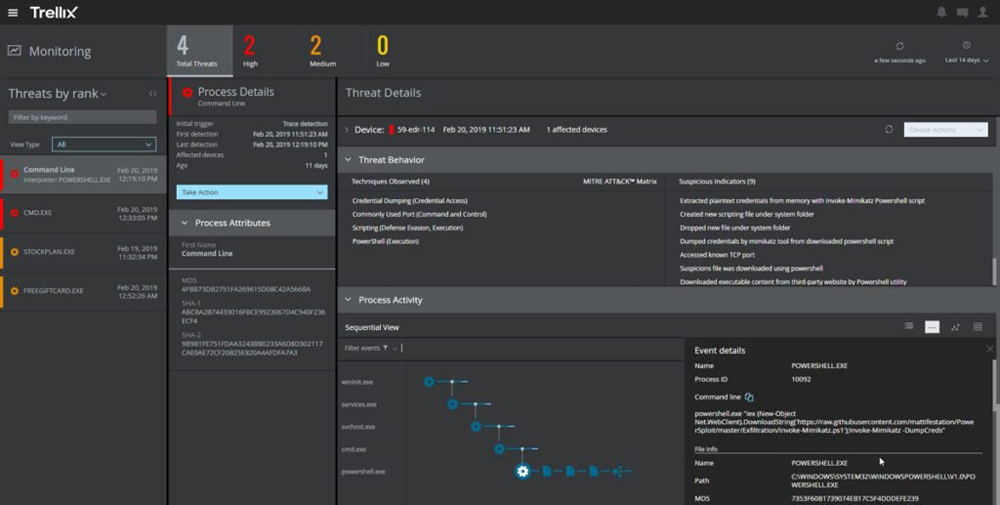
Product Design
The company’s open, comprehensive XDR platform, Trellix XDR, uses advanced machine learning and AI techniques to analyze, correlate, and monitor data from various sources, including network traffic, endpoint behavior, and threat intelligence feeds. Its continuous monitoring enables it to detect sophisticated and complex threats that traditional security solutions might miss.
Why I Picked Trellix
I especially like how Trellix’s AI is capable of operationalizing threat intelligence. It can reduce alert noise and automate responses to security incidents, thus resulting in faster response times, better block rates, and mitigated damage. Notably, its XConsole combines security controls and an advanced research center to provide a unified view of the security landscape and enhanced visibility into network traffic, endpoint activity, and user behavior, allowing analysts to identify and remediate threats before they can cause damage.
Pros and Cons
| Pros | Cons |
|---|---|
| Integrates with more than 1,000 third-party sources | Complex initial setup |
| Comprehensive on-premises product portfolio | The user interface can be better |
Pricing
- Contact for a detailed quote
Features
- Signature-based engine to find and block known malware
- Behavior-based analytics engine to stop advanced threats
- UEBA capability to detect anomalous user behaviors
- Real-time monitoring
How I Evaluated the Best AI Security Software
In evaluating the top AI security platforms, I scored each option against six key criteria for teams and enterprises needing robust yet cost-effective features. From there, I divided each category into weighted subcriteria and assigned an overall score out of five to determine the winner for each category.
Evaluation Criteria
In scoring the AI security solutions, I placed the most emphasis on core features and pricing because the best software options should be cost-effective for businesses. I also assessed each platform’s customizations, integrations, ease of use, and customer support.
- Core Features (30 percent): The best AI security tools offer standard features to identify and mitigate potential threats. These tools should also use machine learning algorithms and deep learning techniques to analyze vast amounts of data to detect malicious behaviors and protect your business from cyberattacks.
Criteria Winner: Darktrace - Pricing (20 percent): For this category, I looked for both the affordability of each tool’s pricing plans and the availability of free trials and/or versions.
Criteria Winner: SentinelOne - Customization (15 percent): Flexible AI security platforms allow organizations to create environment-specific protection. Here, I looked into custom features such as incident procedures, reports, threat monitoring, and more.
Criteria Winner: CrowdStrike - Ease of Use (15 percent): I assessed each AI security tool’s user interface and user experience and also looked into its knowledge base.
Criteria Winner: Vectra AI - Integrations (10 percent): Third-party app integrations are essential for AI security tools because they allow you to create a unified security ecosystem and also streamline workflows.
Criteria Winner: Multiple Winners - User Support (10 percent): For this category, I looked into user support channels for each AI security tool via live chat, phone, and email.
Criteria Winner: Multiple winners
Frequently Asked Questions (FAQs)
I answered the most commonly asked questions about the best AI security solutions to help you determine the best option for your business.
Review your current security architecture and determine which areas most need AI-powered solutions. This may include email security, network security, endpoint protection, data loss prevention, or insider threat detection. Be sure to consider costs, features, complexity, and integrations before settling for a solution. To the extent possible, use a trial version of the AI cybersecurity solution before making a final decision.
The best AI security tool for you depends on your needs. Our analysis above evaluated several top-rated AI security solutions for different users. The best solution for your business is one that integrates fully into your existing infrastructure and works within your budget.
AI security solutions leverage machine learning algorithms to analyze network traffic, user behavior, and system logs to detect patterns and anomalies associated with known or unknown threats. AI can analyze these threats far faster than human security administrators.
AI will not replace the field of cybersecurity and related jobs because AI security tools require oversight from IT professionals. However, AI will automate repetitive security tasks and assist security professionals in their work by arming them with AI-based threat detection, investigation, and response.
MLSecOps, short for Machine Learning Security Operations, is a development and deployment framework for machine learning that considers traditional principles of cybersecurity to improve threat detection and prevention.
Bottom Line: AI Security Software
Because today’s threat actors now use AI, it’s imperative that companies of all sizes also use AI to protect against the emergence of AI-based attacks. The AI security software sold by leading vendors is equipped to offer far better protection than legacy security solutions.
When selecting an AI security solution, make sure that the tool’s mix of on-premise, network configurations, and cloud-based software works well with your technology infrastructure and that the pricing (which may require a sales call to get) fits your budget. Since these AI companies focused on security solutions tend to offer multiple platforms that are complex and wide in scope, it pays to set up several demos before making your choice.
For a deeper understanding of the power of artificial intelligence, read our comprehensive guide to AI for beginners.
The post 6 Best AI Security Software (2025): Next-Gen Cyber Solutions appeared first on eWEEK.
Read more here:: www.eweek.com/rss.xml





